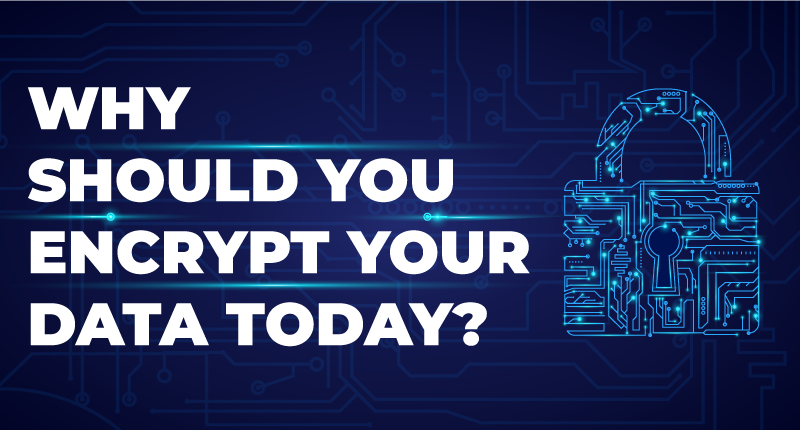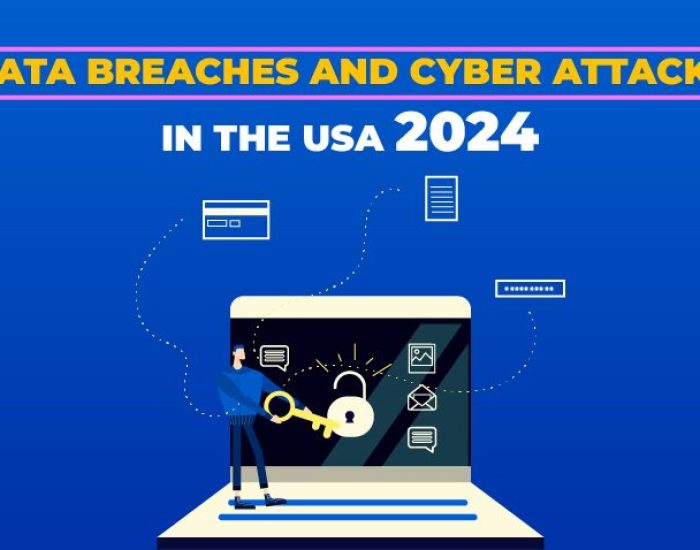The Importance of Encryption in Data Security
 Data security has become a point for convergence with the widespread use of the Internet and the adoption of network applications. The information and data transmitted over the Internet should ensure its integrity, confidentiality, and authenticity. One of the most effective ways to resolve this issue is to leverage advanced encryption techniques. Encryption is one of the most crucial methods to secure data online. It’s a process of converting plain text into ciphertext that is not understood or transformed by unauthorized users. Encryption is a cybersecurity measure protecting sensitive data using unique codes that encrypt data and make it unreadable to intruders. This article will discuss fast-speed symmetric encryption, secure asymmetric encryption, and hash functions. Then we’ll figure out the importance of encryption and how can end-to-end data encryption prohibit data breaches and security attacks.
Data security has become a point for convergence with the widespread use of the Internet and the adoption of network applications. The information and data transmitted over the Internet should ensure its integrity, confidentiality, and authenticity. One of the most effective ways to resolve this issue is to leverage advanced encryption techniques. Encryption is one of the most crucial methods to secure data online. It’s a process of converting plain text into ciphertext that is not understood or transformed by unauthorized users. Encryption is a cybersecurity measure protecting sensitive data using unique codes that encrypt data and make it unreadable to intruders. This article will discuss fast-speed symmetric encryption, secure asymmetric encryption, and hash functions. Then we’ll figure out the importance of encryption and how can end-to-end data encryption prohibit data breaches and security attacks.
What is Encryption?
To get secure in this digital world, the fundamental necessity is to hide sensitive data and information from unauthorized users or malicious actors. Encryption is the best way to protect data from being hacked. It’s a process of making data and files unreadable using an encryption key, so if somebody tries to gain access to sensitive data, they only see gibberish. Encryption provides security and privacy by hiding information from being shared or hacked by malicious actors. To preserve the integrity and confidentiality of data, encryption is an essential tool whose value can’t be overstated.
The encryption takes place through a proper process. The data that needs to be encrypted is known as plaintext. This plaintext is passed through some encryption algorithms. Apart from it, an encryption key is required to convert the plaintext into ciphertext. When the data is encrypted, the ciphertext is sent over the Internet instead of plaintext. Once it is reached the receiver, they use a decryption key to convert ciphertext into the original readable format.
The need for data security has given birth to various encryption techniques, such as symmetric, asymmetric, hash functions, message authentication codes, digital signatures, and more. But in this report, we highlight symmetric and asymmetric encryption techniques and hash functions to secure data.
Symmetric Encryption
In symmetric encryption, also known as private-key encryption, a secret key is held by one person only and exchanged between the sender and receiver of data. Both the sender and receiver should have a copy of a secret key to transfer data. The recipient should have the same key as the sender before the message is decrypted. The standard symmetric encryption algorithms include RC2, AES, DES, RC6, 3DE, and Blowfish. The positive aspect of symmetric encryption is that it is faster. However, symmetric encryption is not much robust technique for protecting data. It can be easily decrypted, hacked, and prone to attacks. But if planned and executed carefully, the risk of decoding can be reduced. Symmetric encryption is suitable for closed systems having fewer risks of a third-party intrusion.
Asymmetric Encryption
Asymmetric encryption, also known as public-key encryption, is a two-key system with a public and a private key. As the name suggested, the public key is available to anyone, but the private key remains with the recipient intended to decode data. The user sends an encrypted message using a private key not shared with the recipient. If a user or sending system first encrypts data with the intended recipient’s public key and then with the sender’s private key, the recipient can decrypt data first using the secret or private key and then the sender’s public key. Using the asymmetric encryption method, the sender and recipient can authenticate each other and protect the data’s secrecy. The asymmetric algorithm includes RSA, Diffie Hellman, XTR, ECC, and EES. The positive aspect of asymmetric encryption is that it is relatively safe and secure than symmetric encryption. However, it is slower than symmetric encryption.
 Hash Functions
Hash Functions
A hash function is a unique identifier for a set of data or information. It’s a process that takes plaintext data and converts it into unique ciphertext. Hash functions generate unique signatures of fixed length for a data set. There is a unique hash for each data set or a message that makes minor changes to the data or information that is easily traceable. Data encryption using hash functions can’t be decoded or reversed back into the original format. Therefore, hashing is used only as a technique for verifying data. Hash functions ensure data integrity, protect stored passwords, and operate at different speeds to suit other processes.
Importance of Encryption
There are a lot of reasons for using encryption techniques. The following points can define its importance. Encryption is essential for data security because it provides
- Confidentiality_ This is critical because it ensures that no unauthorized user can understand the shared information except one having the decipher key.
- Data Integrity_ It ensures that the received information or data has not been modified from its original format. While transferring data online, it may get changed by malicious actors. However, data integrity confirms that data is not intact by an unauthorized user. It can be achieved by using hash functions at both sender and the receiver end to create a unique message.
- Authentication_ It’s ensuring the intended recipient’s identity. The user has to prove their identity to access the information.
- Access Control_ It’s a process of restricting unauthorized users from accessing data. This process controls who can access resources and prevent data from malicious actors.
Conclusion
Today most of us communicate or send information and data in cyberspace, putting security at risk. Users transmit their private information and data that malicious actors can hack into over the Internet. As a result of the widespread adoption of advanced technologies and the Internet, there is a need to implement robust security measures, and data encryption is one of them. This article has learned a lot about data encryption and its various methods, including symmetric, asymmetric, and hash functions. Moreover, we have seen how encryption provides data security, integrity, and confidentiality value.
Protecting your network against cyber threats requires an integrated approach with solid security infrastructure. Encrypt your data on site-level and at the cloud level to keep your information safe from hackers. If a hacker breaks into your data center, you’d want to know right away. The best way to do this is to monitor your data 24/7/365. You can do this by hiring a data security specialist such as Protected Harbor.
Protected Harbor’s suite of services includes remote monitoring and support, software updates, anti-virus, anti-malware, data backup, encryption, and much more. We are providing a free IT Audit to the business looking to safeguard themselves. Contact us for an audit today.






